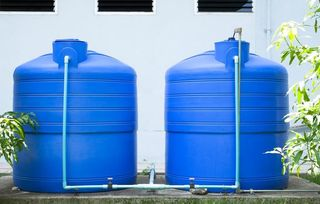Must-know Tips to Ensure Longevity of Your Plastic Water Tanks
Plastic water tanks are an excellent solution for water storage due to their durability, cost-effectiveness, and resistance to corrosion. However, to ensure that your plastic water tank lasts as long as possible, it’s essential to follow certain maintenance and care practices. Here are some must-know tips to ensure the longevity of your plastic water tanks.
Choose a Reputable Manufacturer
The first step in ensuring the longevity of your plastic water tank is to select a high-quality product from a reputable water tank manufacturer. Manufacturers with a good reputation will use high-grade materials and adhere to strict quality control processes, ensuring that the tanks are durable and reliable. When selecting a manufacturer, look for certifications and compliance with industry standards, as these are indicators of a high-quality product.
Install Properly
Proper installation is crucial for the longevity of plastic water tanks. Ensure that the tank is placed on a flat, level surface free from sharp objects or debris that could puncture or damage the tank. If the tank is installed on a concrete base, make sure it is adequately cured and smooth. For above-ground installations, secure the tank firmly to prevent movement or tipping over during extreme weather conditions. Improper installation can lead to structural stress and premature failure of the tank.
Regular Cleaning and Maintenance
Regular cleaning is essential to prevent algae growth and sediment buildup inside the tank. Schedule periodic cleaning to remove any deposits and ensure the water remains clean and safe for use. To clean the tank, drain the water completely and use a mild detergent or a solution of baking soda and water to scrub the interior walls. Rinse thoroughly to remove any cleaning agents. It’s recommended to perform this cleaning at least once a year, but more frequent cleaning may be necessary if the tank is used for drinking water.
Protect from Sunlight
Prolonged exposure to sunlight can degrade the plastic material of the tank, reducing its lifespan. To protect your plastic water tanks from UV radiation, consider placing them in a shaded area or using a tank cover. Some manufacturers offer tanks with UV-stabilized materials, which provide additional protection against sunlight. This is particularly important for tanks installed outdoors, as direct sunlight can cause the plastic to become brittle and crack over time.
Monitor Water Quality
Maintaining good water quality is essential for the longevity of your plastic water tank. Contaminants, chemicals, and corrosive substances can damage the tank’s interior over time. Regularly test the water quality and treat it as necessary to prevent corrosion and buildup of harmful substances. Installing a filtration system can help remove impurities before they enter the tank, ensuring that the water remains clean and the tank stays in good condition.
Regular Inspections
Conducting regular inspections can help identify potential issues before they become major problems. Check the tank for any signs of wear and tear, such as cracks, leaks, or discoloration. Pay close attention to the tank’s fittings, valves, and connections to ensure they are secure and in good condition. If you notice any damage, address it promptly to prevent further deterioration. Regular inspections can extend the life of your plastic water tank by ensuring that minor issues are dealt with before they escalate.
Avoid Overfilling
Overfilling your plastic water tank can cause undue stress on the tank walls and lead to cracking or bulging. To prevent this, ensure that the tank is filled only to the recommended capacity. Installing an overflow valve can help prevent overfilling by allowing excess water to escape, thus maintaining the tank’s structural integrity. Overfilling is particularly problematic for tanks installed in areas with heavy rainfall or fluctuating water supply, as it can lead to significant damage over time.
Temperature Considerations
Extreme temperatures can affect the longevity of plastic water tanks. In cold climates, water inside the tank can freeze and expand, causing the plastic to crack. To prevent this, insulate the tank or install a heating element to keep the water from freezing. In hot climates, high temperatures can cause the plastic to expand and weaken. Using UV-stabilized tanks and providing shade can mitigate the effects of extreme heat.
Proper Ventilation
Adequate ventilation is important for preventing the buildup of gases inside the tank. This is especially relevant for tanks storing water for agricultural or industrial use, where organic matter might decompose and produce gases. Ensure that the tank has proper venting to allow gases to escape and maintain pressure equilibrium. Proper ventilation also helps in maintaining the structural integrity of the tank and prevents damage from internal pressure buildup.
Use Appropriate Accessories
Using the right accessories can enhance the performance and longevity of your plastic water tanks. High-quality fittings, hoses, and valves specifically designed for use with plastic tanks can prevent leaks and damage. Avoid using metal fittings, which can corrode and damage the tank. Instead, opt for plastic or brass fittings that are compatible with your tank material.
Conclusion
Ensuring the longevity of your plastic water tanks involves a combination of selecting a high-quality product from a reputable water tank manufacturer and following proper maintenance practices. By installing the tank correctly, protecting it from the elements, maintaining good water quality, and conducting regular inspections, you can maximize the lifespan of your tank and ensure reliable water storage for years to come.

